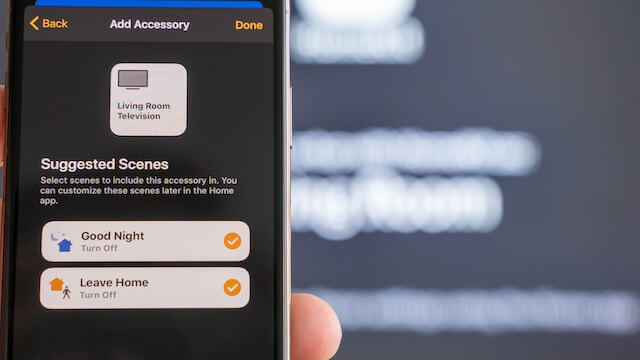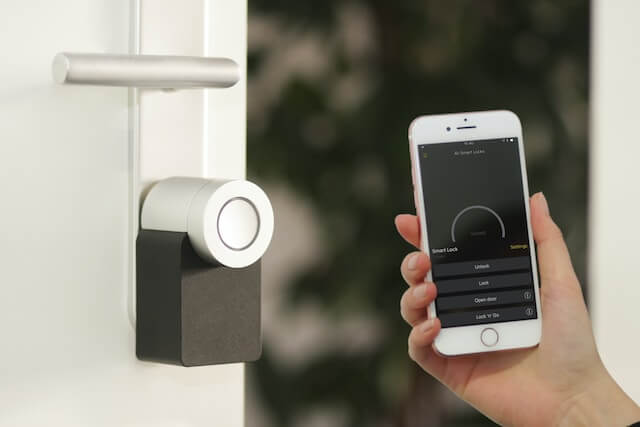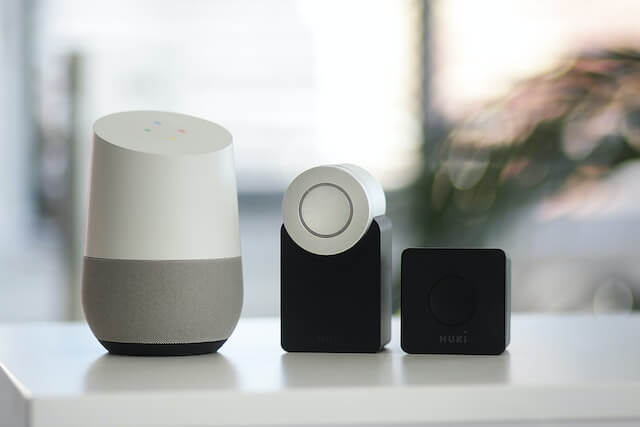As technology continues to advance, the concept of smart homes is becoming more prevalent in the real estate industry. The integration of artificial intelligence (AI) in rental homes has become increasingly popular in recent years due to its ability to provide a more comfortable and convenient living experience for tenants.
There are a lot of advantages to having a smart home and there are many ways to integrate AI in your rental home. This is why more and more landlords are embracing smart home systems.
Advantages of Having a Smart Home
Interconnecting Devices
One of the biggest advantages of having a smart home is the ability to connect various devices to a central hub. This interconnectivity allows tenants to control everything in their home, from lights and temperature to security systems and entertainment devices, all from a single platform.
On a smartphone, one app should usually suffice. The tenant will then have access to all the features of any smart system, so they won’t need to get up to adjust the settings on the HVAC system, for example.
Remote Management
With smart homes, tenants can manage and control their home devices remotely. This means they can turn off lights, adjust the temperature, and monitor security cameras even when they are away from home. This is also very efficient in keeping utility costs low or avoiding unnecessary use of electricity just because soomeone forgot to turn off the lights in the bathroom.
Home Management
With AI in rental homes, tenants can easily manage their households. Smart thermostats can gain real-time insights into their energy consumption and make their home more energy-efficient. Smart refrigerators can determine whether or not it’s time to restock without needing to open it to see its contents. With a smart TV, they can keep track of their kids’ Netflix usage and the shows they’re watching. AI can improve the way of life for your tenants with the help of this information.
Tenants can also manage their household chores with more ease. For example, a smart vacuum cleaner can clean the house automatically while a smart dishwasher can wash and dry dishes without any assistance.

More Security
Smart homes come with various security features such as smart locks, doorbells with cameras, and motion sensors. These features enhance the safety and security of the rental home, providing tenants with peace of mind.
There are also intelligent security cameras that provide real-time monitoring and constantly watch over your home. Smart security systems can send alerts to your tenant’s smartphone when they observe questionable activities. Some landlords can even set up intelligent systems to contact the local police if the systems notice movement when nobody should be there. These security systems can include smart lights that turn on when they detect motion outside. This is usually sufficient to deter potential burglars.
Raises the Value of Real Estate
Smart homes are a hot commodity in the real estate industry. Integrating AI into a rental home can raise its value, attracting tech-savvy tenants who are willing to pay a premium for a smart home.
Ways to Integrate AI in Your Rental Home
Smart Assistants
Landlords can integrate smart assistants like Amazon’s Alexa, Google Assistant, and Apple’s Siri into rental homes to provide voice-activated control over various devices. They can play music, set reminders, and even make phone calls, making life easier for tenants.
AI Cleaners
Smart vacuum cleaners and mops can clean the floors and carpets automatically, allowing tenants to focus on other tasks. They come with various features like floor mapping, self-charging, and remote control.
Smart Locks
Smart locks provide enhanced security features like keyless entry and remote access. The ones that are connected to your smartphone will notify you if someone tries to enter your house. But that’s not all; in addition, it enables you to lock and unlock your door while you’re gone and speak with whoever is at the door thanks to Bluetooth and Wi-Fi connectivity. By using smart locks, you can also avoid carrying around extra keys and running the danger of losing them.

They can also monitor who is coming and going, providing tenants with greater control over who enters the rental home. It’s no wonder smart locks are one of the most popular smart home tools in the market.
Smart Kitchen Appliances
Smart kitchen appliances like ovens, microwaves, and refrigerators can be controlled remotely. They can even provide recipe suggestions and cooking tips, making meal preparation easier for tenants. Tenants may be worried about the safety of these appliances. However, automated shut-off functions on smart kitchen appliances lower the possibility of mishaps like fires, gas leaks, etc.
Smart Fridge
A smart fridge can monitor food inventory, track expiration dates, and suggest recipes based on the available ingredients. It can even order groceries automatically, making life easier for tenants.
How to Market Your Smart Home
Padleads is an online listing platform that connects landlords with potential tenants. To market your smart home, you should create a detailed listing that highlights the features of your rental home. You should also provide clear and concise descriptions of the smart devices installed in the rental home. Once you have a captivating listing, syndicate it to other high-traffic websites so more potential tenants would be interested in renting your smart home.

Smart homes are becoming increasingly popular in the rental industry and for a good reason. They provide tenants with a more comfortable and convenient living experience, making it an attractive option for tech-savvy tenants.
By integrating AI into rental homes, landlords and rental agents can increase the value of their properties and attract high-paying tenants who are willing to pay a premium for a smart home.
As technology continues to advance, the demand for smart homes in the rental industry is only going to increase. Therefore, landlords should consider integrating AI into their rental homes to stay ahead of the curve and provide tenants with the latest in home automation technology.